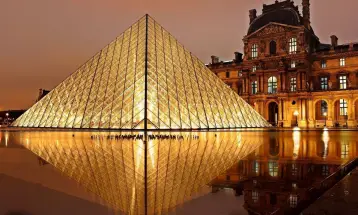Istiqlal Mosque, the Largest Mosque in Southeast Asia

Holiday Ayo - Standing on 91,629 m2 (986,286 sq ft) of land, the Grand Mosque of Istiqlal is easily the largest mosque in Southeast Asia, with the capacity to host up to 120,000 pilgrims.
Istiqlal Mosque is located in Jakarta, Indonesia with a capacity of 200,000 people, the largest in Southeast Asia. In terms of the building structure and land coverage, Istiqlal is also the largest in Southeast Asia and fourth-largest in the world, with 95,000 m2 of area.
The name ‘Istiqlal’ means ‘independence’ in Arabic, as it was built to commemorate Indonesian independence and meant to be the national mosque. Located in Central Jakarta, the mosque was designed by architect Frederich Silaban in 1954. It took 17 years to build, led directly by President Soekarno, founding father and the first President of Indonesia.
Having remained essentially unchanged for 41 years, the mosque was due to undergo a major renovation, including architecture, landscaping, and new interior and exterior lighting to transform Istiqlal into an impressive landmark representing the pride of Indonesia.
When the plan to renovate the mosque was finalized in 2018, Signify seized the opportunity to consult on upgrades to the interior and exterior lighting of the iconic structure.
Completed in July 2020, the newly renovated Grand Mosque of Istiqlal was inaugurated by President Joko Widodo on January 7, 2021. A total of 3,375 light fixtures were installed on the mosque’s main façade, main dome, small dome, façade of the minarets, corridors, and main prayer hall.
The interior lighting design concept was to provide the unique experience of praying in a mosque without a roof and changing scenery following prayers. On the exterior, the aim was to imitate moonlight - from full moon to super-blue blood moon - by lighting the main dome and minaret with dynamic floodlighting, as well as displaying unique lighting schemes during special events.
With the new lighting, Istiqlal Mosque looks even more beautiful and grand than before, befitting a building with significant historical and religious value.








Leave a comment